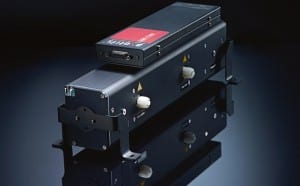SWISS micro technology (MEMS) specialist Axetris recently published a case study in AWE magazine suggesting a popular role for gas detection based on Tunable Diode Laser Spectroscopy (TDLS), in areas like emissions monitoring, biogas detection, fugitive emissions, natural gas leak detection and process control.
 The firm offers Laser Gas Detection (LGD) products based on TDLS, with apparent advantages over other gas detection methods in terms of precision, gas selectivity and sub-ppm detection capabilities, while also allowing contactless measurement. A modular design and the intellectual property behind its “reference channel-free devices” support the firm’s claim to providing cost synergies and driving down unit cost in high volume applications.
The firm offers Laser Gas Detection (LGD) products based on TDLS, with apparent advantages over other gas detection methods in terms of precision, gas selectivity and sub-ppm detection capabilities, while also allowing contactless measurement. A modular design and the intellectual property behind its “reference channel-free devices” support the firm’s claim to providing cost synergies and driving down unit cost in high volume applications.
How it works
Axetris describes its proprietary TDLS gas detection technology as using a 0.1nm narrow bandwidth diode laser beam, which is scanned across an absorption band of the target gas, performing a high-resolution near-infrared absorption measurement. Electronic lock-in technology separates the gas absorption information from electro-optical system information, and leads to a detection method that eliminates the need for a physical reference channel. The LGD modules allow continuous monitoring, and the firm says customers can use built-in diagnostic features to design maintenance-free gas analysers.
The LGD products therefore present a clear alternative to current sub-optimal detection solutions, says Axetris, and combine precision with high target gas selectivity, calibration-free operation, low-cost-of-ownership and easy OEM integration.
The firms says its method has the edge over existing gas detection technologies such as Electrochemical (EC) or Non-Dispersive Infrared (NDIR), with respect to parameters such as its extremely high selectivity, low detection limits (ppm), long lifetime (10+years), quick response time, and compact size. Its use of a modular design opens the door for a high level of customisation, and the product is also said to offer a very low cost of ownership – with low unit cost achievable through scaling effects.
One of the first products, the Axetris LGD F200, is an extractive module designed for easy integration into gas analysis systems in areas like CEMS. For some applications like process control, a short response time, usually expressed as T90 (time to reach 90% of applied concentration reading after a rapid concentration change), is a key requirement. For regulatory applications such as CEMS, a certain T90 reaction of the gas analyzer is defined by existing norms (e.g. EN14181/QAL1 testing requires an analyzer T90 < 400 seconds).
The gas measurement cell volume of the LGD F200 is a miniscule 15 ml, says the firm. This enables a quick exchange of sample gas through the extractive module. This product feature, combined with an intelligent design and material selection, helps the LGD F200 typically achieve a T90 time of a few seconds.
“As every gas analyzer engineer would agree, there is a strong dependence between achieved T90 reaction time and the sampling flow rate,” says a release from Axetris. This dependence is especially strong for “sticky” molecules, such as ammonia (NH3) and hydrochloric acid (HCl) – two of the gases for which LGD F200 products are available. For such gases, molecule adsorption on all surfaces of the sampling system makes it extremely challenging to achieve quick T90 times. Recent internal tests, however, have shown that at suggested sampling flow rates of 2,000-3,000 sccm are used, the LGD F200-H NH3 achieves a T90 time of 3-6 seconds, according to Alextris.








